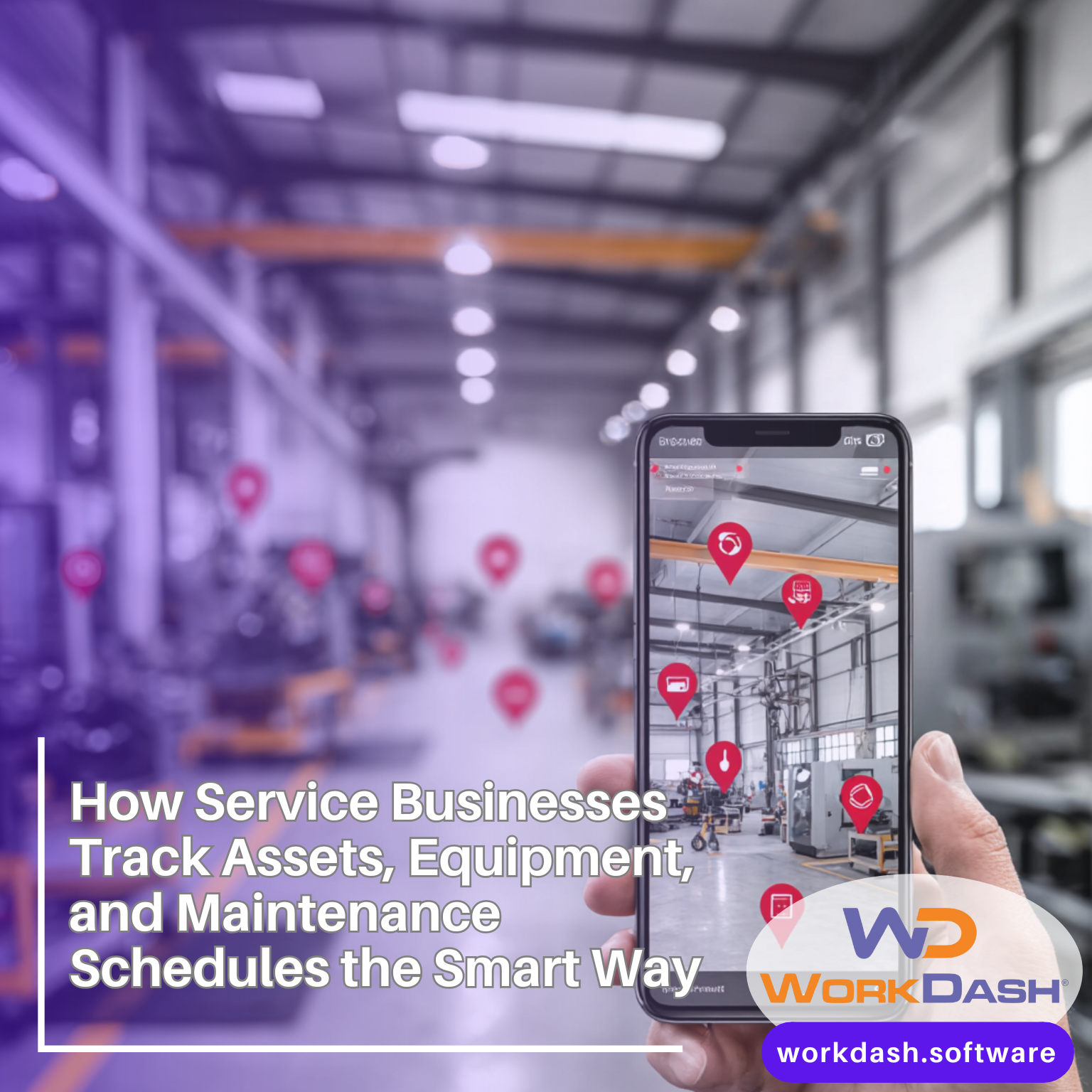Table of Contents
In today’s fast-paced business world, boosting efficiency and productivity has never been more important. As companies look to stay ahead of the competition, streamlining business operations and optimising workflows is key.
That’s where business automation comes in—a game-changer that’s reshaping how organisations work by using technology to handle repetitive tasks, improve accuracy, and free up valuable human resources.
What is Business Automation?
Business automation is all about using technology to take care of tasks or processes that are usually done by people. The goal is to boost efficiency, cut down on errors, and improve productivity by streamlining repetitive and routine tasks. Automation can be applied to many areas of a business, such as:
Operational Processes: Think inventory management, order processing, and billing.
Admin Tasks: Things like scheduling, data entry, and managing documents.
Customer Interactions: Using chatbots, automated responses, and CRM systems.
Decision-Making: Using data analytics and machine learning to guide business decisions.
At its heart, business automation brings together tools, software, and systems to manage tasks with little human intervention. This can be as simple as rule-based automation, where set rules determine actions, or more advanced processes using artificial intelligence (AI) and machine learning (ML) for smarter decision-making.
Understanding Business Automation
Automation vs. Manual Processes
Automation relies on technology to handle tasks that humans would normally do. This usually means using software, machines, or systems to carry out repetitive tasks with little input from people. Automation aims to improve efficiency, cut down on mistakes, and make operations run more smoothly.
Manual processes, on the other hand, are done by people without help from automated systems. While manual processes can be flexible and adaptable, they’re often time-consuming, more prone to errors, and less efficient compared to automation.
Key Differences:
Efficiency: Automation gets tasks done quickly and consistently, whereas manual work is slower and can vary.
Error Rate: Automation reduces human mistakes, while manual processes are more likely to have errors.
Cost: While automation can save money in the long run by reducing the need for manual labour, initial setup costs may be higher. Manual processes come with ongoing labour costs and are harder to scale.
Scalability: Automated systems can easily handle larger workloads, but manual processes need more people and resources to keep up.
Types of Automation
Business automation can be broken down into different categories based on what it does and the benefits it brings:
Operational Automation: Focuses on automating routine tasks that are part of daily business operations, such as:
Process Automation: Handles standard tasks like order processing, inventory management, and invoicing. Enterprise Resource Planning (ERP) systems are often used for this.
Robotic Process Automation (RPA): Uses software robots to manage tasks like data entry and transaction processing.
Analytical Automation: Uses technology to analyse data and generate insights for better decision-making. This includes:
Business Intelligence (BI) Tools: Automatically collect, analyse, and report business data to provide actionable insights. Examples include dashboards that track performance.
Predictive Analytics: Uses machine learning to predict future trends by analysing past data, helping with forecasting sales and market trends.
Customer Interaction Automation: Enhances how businesses engage with customers using automated systems, like:
Customer Relationship Management (CRM) Systems: Automate customer data management, communication, and services.
Suggested Read: Enhancing Customer Service Efficiency through CRM Automation
Chatbots and Virtual Assistants: Provide automated responses to customer inquiries using pre-set scripts or AI.
Strategic Automation: Supports high-level decision-making, such as:
Decision Support Systems (DSS): Automates complex decisions with data-driven recommendations.
Advanced Analytics: Uses AI and machine learning for market analysis and risk management.
Common Misconceptions About Automation
Even with its growing popularity, there are still a few myths about automation:
Myth 1: Automation Takes Jobs
Many think automation will replace jobs entirely. While it can reduce the need for certain repetitive tasks, it often creates new roles and opportunities for upskilling.Myth 2: Automation is Only for Big Companies
Automation isn’t just for big corporations. Affordable tech solutions have made automation accessible for businesses of all sizes, including small and medium enterprises.Myth 3: Automation is a One-Time Deal
Automation isn’t a one-off setup. It’s an ongoing process that needs regular updates and optimisations to keep up with changing business needs and technology.Myth 4: Automation is a Plug-and-Play Solution
While some automation tools are easy to set up, many need careful planning and integration with existing systems.Myth 5: Automation Delivers Instant Results
Automation brings great benefits, but it usually takes time to see the full impact. It’s important to set realistic expectations and measure progress over time.
Benefits of Business Automation
Cost Reduction: Automation reduces the need for manual labour, saving money in the long run. Resources can be redirected to more strategic activities.
Time Savings: Automated processes are much quicker than manual ones. For example, automated invoicing drastically cuts down the time spent on billing.
Error Reduction: Automation helps eliminate human errors, which is especially important in tasks requiring precision like data entry.
Improved Productivity: With repetitive tasks handled by automation, employees can focus on more value-added activities, boosting overall productivity.
Better Customer Experience: Automation speeds up customer service. Chatbots, for example, provide instant responses, leading to a more satisfying customer experience.
Data Management: Automated systems can manage large volumes of data more efficiently, leading to better analysis and reporting.
Scalability: Automation makes it easier for businesses to scale up without increasing complexity or labour costs.
Suggested Read: Key Benefits of Business Automation
Identifying Opportunities for Automating Business Processes
As a business owner, figuring out where automation can make the biggest difference means taking a good, methodical look at your unique needs and workflows. This section helps you assess your business requirements, analyse processes, identify repetitive tasks, and prioritise automation opportunities to boost efficiency and growth.
Assessing Your Business Needs
Before jumping into automation, it’s important to get a clear understanding of your business’s needs and goals. This involves reviewing current operations, spotting areas that could benefit from automation, and setting clear targets.
Understand Your Goals
Work out what you’re hoping to achieve with automation. Do you want to improve productivity, reduce costs, boost customer satisfaction, or streamline operations? Making sure your automation goals are aligned with your broader business objectives will ensure your efforts have the biggest impact.
Review Existing Systems
Have a good look at your current systems and processes to pinpoint inefficiencies or bottlenecks. Think about how automation could fix these issues and improve overall functionality.
Get Input from Stakeholders
Chat with team members and department heads to get their perspective on where automation could help. Their insights can be invaluable in identifying key areas that need attention.
Prioritising Business Automation Opportunities
Once you’ve identified areas for automation, the next step is prioritising these opportunities. Doing this effectively ensures you focus your resources on the automation initiatives that will have the most significant impact. Below are some criteria to guide your decision-making.
Criteria for Prioritisation
Prioritising automation involves determining which processes or tasks will benefit most from automation. Here are the key factors to keep in mind:
Efficiency Gains:
Time Savings: Think about how much time can be saved by automating a particular task. Repetitive, time-consuming tasks are often ideal candidates for automation.
Error Reduction: Consider how automation can reduce mistakes or inconsistencies in your workflows. Automation can standardise tasks, which is particularly helpful in areas like data entry or reporting.
Alignment with Business Objectives:
Strategic Goals: Make sure the automation opportunity aligns with your business’s key objectives, whether that’s improving customer experience, cutting costs, or increasing sales.
ROI Potential: Estimate the return on investment (ROI) for each automation opportunity. This includes both direct savings, like reduced labour costs, and indirect benefits, like increased customer satisfaction.
Complexity and Feasibility:
Ease of Implementation: Look at how difficult it would be to automate the task. Simple, repetitive tasks are generally quicker and easier to automate, while more complex processes may require advanced solutions and take longer to implement.
Integration Requirements: Consider how easily the automation solution can fit into your existing systems. You’ll want solutions that integrate smoothly with your current tech stack.
Resource Requirements:
Cost of Implementation: Think about the cost of automating each task, including software, hardware, and any necessary infrastructure updates. Balance these costs against the potential benefits.
Human Resources: Consider the time and effort required for setup, training, and maintenance. Prioritise opportunities that align with your team’s expertise and availability.
Scalability:
Growth Potential: Focus on automation opportunities that can scale with your business. Prioritise solutions that can handle future growth without needing significant additional investment.
Short-Term vs. Long-Term Goals
Balancing short-term and long-term goals is essential when prioritising automation. This ensures you achieve quick wins while also laying the groundwork for long-term success.
Short-Term Goals:
Quick Wins: Target automation opportunities that deliver immediate results. These are usually repetitive, time-consuming tasks that are simple to automate, like automating email responses or scheduling.
Demonstrating Value: Implementing quick automation solutions can showcase immediate benefits, helping to build support within your team.
Immediate Impact: Prioritise tasks that tackle current pain points or bottlenecks. This can improve day-to-day operations straight away.
Long-Term Goals:
Strategic Projects: Focus on automation opportunities that align with your long-term objectives, such as integrating advanced technologies like AI, machine learning, or enterprise resource planning (ERP) systems.
Scalable Solutions: Prioritise more complex automation projects that support future growth. These initiatives may require more investment but offer significant long-term benefits.
Sustained Improvements: Create a long-term roadmap for automation that includes both short-term and long-term goals. This ensures continuous improvement as your business evolves.
Balancing Act: Aim to balance quick wins with long-term investments. Short-term goals deliver immediate results, while long-term goals ensure your automation strategy supports sustained growth.
Review and Adjust:
Ongoing Evaluation: Regularly review the impact of your automation efforts and adjust priorities as needed based on new insights, changing business needs, and advancements in technology.
By carefully considering these factors and balancing short-term and long-term goals, you can focus your automation efforts where they’ll have the greatest impact. This strategic approach optimises resources, delivers immediate benefits, and sets your business up for future growth and success.
Selecting the Right Business Automation Tools
Choosing the right business automation tools is a critical step in optimising your processes. The right tools can boost efficiency, cut down manual work, and fuel growth. In this section, we’ll explore the essential criteria for selecting automation tools, focusing on functionality, scalability, and cost-effectiveness.
Criteria for Choosing Tools
When evaluating automation tools, it’s important to take a structured approach to ensure you select solutions that suit your business needs. Here’s what to look out for:
Functionality and Features:
Core Capabilities: Make sure the tool offers the key functionalities you need. For example, if you’re after a marketing automation tool, check that it covers email campaigns, lead management, and analytics.
Advanced Features: Look out for any extra features that could further enhance your processes, like integration with other tools, AI-driven insights, or customisable workflows.
User Experience: The tool should be easy to use and intuitive, reducing the learning curve for your team and encouraging adoption.
Scalability and Flexibility:
Growth Potential: Choose tools that can scale as your business grows. Look at whether the tool can handle increased data or transactions without affecting performance.
Customisation: Check if the tool can be tailored to fit your business’s specific processes. Customisable features, like adjustable workflows, allow for better alignment with your needs.
Integration: Ensure the tool can easily integrate with your existing systems. Seamless integration is crucial for maintaining efficiency across your tech stack.
Cost and ROI:
Total Cost: Consider both the upfront cost and ongoing expenses, like subscription fees, maintenance, and any customisation needed.
Return on Investment: Estimate the potential ROI by comparing the tool’s cost against the expected benefits.
Measuring Success and ROI of Business Process Automation
Key Performance Indicators (KPIs)
When it comes to measuring the success of your automation efforts, KPIs are key. They should be directly tied to your automation goals. Whether you’re aiming for time savings, fewer errors, or a productivity boost, having clear KPIs lets you track how well automation is delivering on those targets. With the right KPIs in place, you can measure success objectively and make sure your automation efforts are paying off.
Metrics for Evaluating Automation Success
To really gauge how well your automation is performing, you’ll need solid metrics. These might include things like operational efficiency, task completion rates, or even user satisfaction. Metrics like these offer a clear, data-driven way to see how well automation is working and where you might be able to tweak things for even better outcomes.
Tools for Tracking and Reporting
Good tracking and reporting are essential for staying on top of how your automation is performing. Use specialised software to collect and analyse your KPI data. These tools can provide detailed reports, dashboards, and visualisations that give you a full picture of your automation’s performance. This makes it easier to make informed, data-driven decisions and ensure that your automation efforts are meeting your business goals.
Evaluating ROI
Understanding your Return on Investment (ROI) is critical when it comes to automation. This is about comparing the benefits of automation—like cost savings and increased efficiency—against the investment you’ve made. You’ll need to look at both direct benefits, like reduced labour costs, and indirect ones, such as better customer satisfaction. A proper ROI evaluation helps justify your investment and guides any future decisions.
Calculating Cost Savings and Efficiency Gains
One of the biggest perks of automation is the potential for cost savings and efficiency gains. Work out how much you’re saving in labour and operational costs, as well as how much faster tasks are getting done with fewer errors. These calculations will give you a good idea of the financial impact of automation and help confirm whether it was worth the investment.
Analysing Business Impact and Benefits
Automation isn’t just about saving money—it’s also about the broader impact on your business. Take time to assess how automation has improved your customer experience, boosted decision-making, and optimised processes across the board. By doing this, you can see how automation is contributing to your long-term goals and growth.
By measuring success and ROI effectively, you can ensure that your automation initiatives are delivering real, tangible benefits while aligning with your business goals. This will help you make informed decisions and continue improving as you go.
Scaling and Future-Proofing
Scaling Your Automation Efforts
Scaling automation means extending your current solutions to handle bigger workloads and more complex tasks. It could involve optimising your existing systems for higher volumes, adding new automation tools, or expanding the number of automated processes. Scaling ensures that your automation evolves in line with your business needs, keeping everything running smoothly as you grow.
Expanding Automation to New Areas
Once your business is established, you might find other areas where automation could make a difference. This means looking at new processes or departments that could benefit from automation. By expanding automation into different areas, you’ll be driving even more efficiency and value for your business.
Adapting to Business Growth
As your business expands, your automation systems need to adapt to keep pace. This could mean upgrading tools, tweaking workflows, or even scaling up your infrastructure to handle increased demand. It’s important to regularly review and adjust your automation strategy so it continues to align with your growing business and keeps you on track to meet your goals.
Staying Updated with Technology
Automation technology is constantly evolving, and it’s vital to keep up with the latest trends and innovations. Staying in the loop with new tools, features, and best practices means you can make sure your automation solutions stay cutting-edge and effective, helping you stay ahead of the competition.
Emerging Trends and Innovations
The world of automation is full of exciting developments, like AI, machine learning, and advanced analytics. By keeping an eye on emerging trends, you can anticipate changes and take advantage of innovative solutions to refine and enhance your automation strategy.
Continuous Improvement and Adaptation
Automation is never a “set and forget” process. It requires regular review and adjustment to make sure it’s still meeting your needs. By collecting feedback, analysing performance data, and making tweaks as necessary, you’ll ensure your automation keeps delivering value and adapts to your evolving business needs.
By focusing on scaling, expanding, adapting, staying updated, and continuously improving, you can future-proof your automation strategy and make sure it continues to support your business as it grows and evolves.





